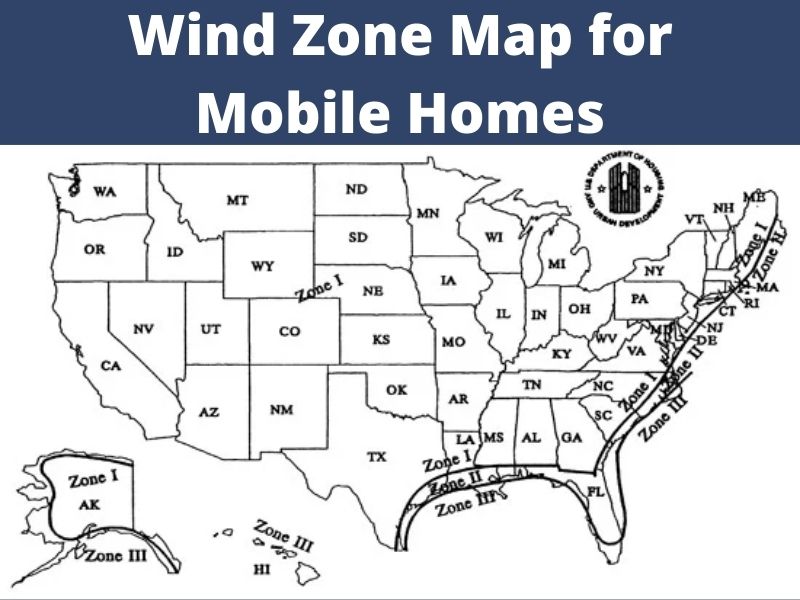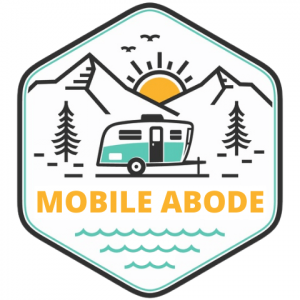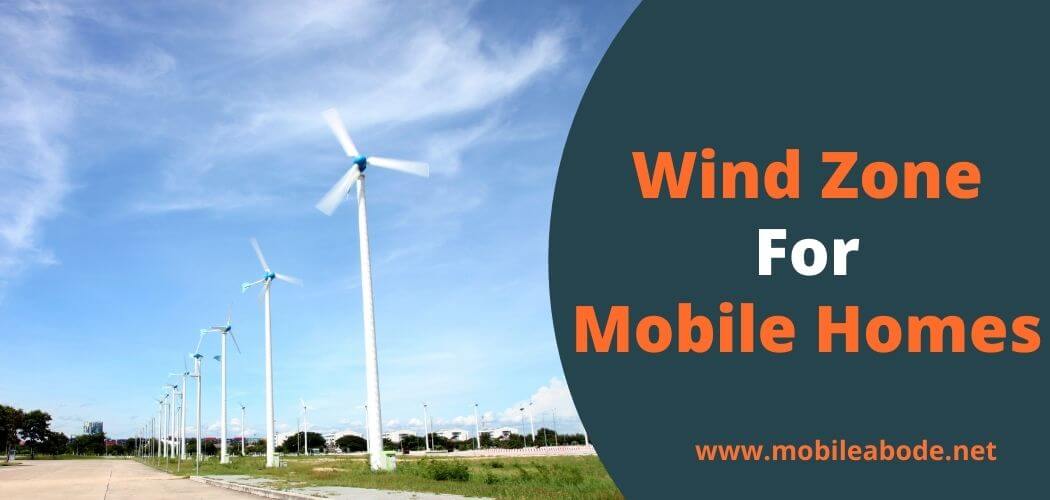There are different zones in the United States where you can place a mobile home. This is important to know because if you live in an area with high wind speeds, your home could be damaged or blown away during storms.
The effects of wind on homes can be devastating. The force and power of the winds can cause great damage to a home, whether it is a mobile home or not.
To protect your investment in your mobile home, you must understand the different zones where these structures are susceptible to high winds and what precautions should be taken in each zone.
Understanding how your structure will react under such circumstances will help you better prepare for potential damages that may occur from high wind speeds.
Wind Zones For Mobile Homes
The following article will give you information on each of these zones and what they mean for your living situation.
1) Wind zone 1 mobile homes
What is a wind zone 1 mobile home? This zone is defined as an area where average wind speeds are 9 – 11 miles per hour (mph) during April, May, June, July and August. During this period, homes in zone 1 are usually not required to meet any specific building codes because there is no history of high winds to necessitate such codes.
2) Wind zone 2 mobile homes
Mobile homes located in zone 2 are usually not at risk during April, May, June, July and August. During this period, average wind speeds are less than 9 mph. Homes in this area do not need to be secured with tie-downs or anchors because there is no history of high winds to necessitate such codes.
During September – February, however, mobile homes in zone 2 will often be required to meet certain building code requirements for wind strength if they are built before 1990. mobile homes
If your home was constructed after September 1990 (or before that date depending on where you live) likely, you will not have to meet these requirements unless it has been determined through experience that your particular area faces extreme wind speeds during this period.
3) Wind zone 3 mobile homes
Within zone 3, the average wind speeds are between 10 – 15 mph from April to June and October through December.
Homes in this area do not need to be anchored unless they have been determined as being an “imminent hazard” or a “substantial hazard” by local officials because there is no history of high winds to necessitate such codes.
During July and August, average wind speeds are usually between 11 – 13 mph. Homes located in zone 3 may be required to meet certain building code requirements for wind strength if they were built before January 1, 1976.
4) Wind zone 4 mobile homes
Within zone 4, the average wind speeds are between 10 – 15 mph from April to June and October through December. Homes in this area do not need to be anchored because there is no history of high winds to necessitate such codes.
Homes located in zone 4 may be required to meet certain building code requirements for wind strength if they were built before January 1, 1976.
5) Wind zone 5 mobile homes
Homes located in zone 5 (also known as the “red zone”) are in an area where the average wind speed ranges from 12 – 18 mph in April, May, June, July and August.
These homes must be anchored or secured with tie-downs by local governments because there is an established history of high winds in this area.
During September – February, however, average wind speeds in zone 5 usually drop below 12 mph and homes in this area do not need to be secured with tie-downs or anchors unless they have been determined as being an “imminent hazard” by local officials because there is no history of high winds to necessitate such codes.
6) Wind zone 6 mobile homes
Homes located in zone 6 (also known as the “yellow zones”) are in an area where the average wind speed ranges between 18 – 22 mph from April to June and October through December.
Homes located here must be anchored or secured with tie-downs because there is an established history of high winds in this area.
During July and August (zone 6), average wind speeds are usually between 13 – 17 mph. Homes located in this zone may be required to meet certain building code requirements for wind strength if they were built before January 1, 1976.
7) Wind zone 7 mobile homes
Homes located in zone 7 (also known as the “green zones”) are in an area where the average wind speed ranges between 22- 25 mph from April to June and October through December.
Homes located here must be anchored or secured with tie-downs because there is an established history of high winds in this area.
wind zone map for mobile homes

What is the best wind zone for a mobile home?
Here are a detailed overview about all wind zones according to mobile homes prospective.
Zone 1: The least wind prone zone. In this zone, the average wind speed is between 3 – 5 mph. Homes in this area do not have to be anchored or have tie-downs installed unless they have been determined as being an “imminent hazard” by local officials.
Zone 2: This is a low-risk zone where the average wind speeds range from 6 – 9 mph from April to June and October through December.
Zone 3: This is considered a moderate risk zone where the average wind speed ranges between 10 – 14 mph from April to June and October through December.
Zone 4: This is another moderate risk zone where the average wind speed ranges between 15 – 19 mph on an annual basis. Homes in this area must be anchored or secured with tie-downs because there is an established history of high winds in this area.
Zone 5: Is a high-risk zone where the average wind speed ranges between 20 – 24 mph on an annual basis.
Zone 6: This is another high-risk zone where the average wind speed ranges between 18 – 22 mph from April to June and October through December.
FAQs about Mobile Home Wind Zones
1. What wind zone is my mobile home?
To find out what wind zone your mobile home is located in you will have to call your local building department or fire department.
This information can usually be found on the official paperwork filed with your local government when your home was built.
2. What are the requirements for mobile homes in high-risk zones?
Homes located in heavy wind areas are required to meet much higher standards than those in lower-risk zones.
Not only must they be anchored but because of their extreme vulnerability, mobile homes in these high wind areas must also follow specific guidelines for construction depending on where they were manufactured and who manufactured them.
For example, if a mobile home was manufactured by a company that holds an AISC (American Institute of Steel Construction) certificate then it will be required to meet certain criteria that may not apply to homes manufactured by companies that do not hold this distinction.
Please note: If you live in a mobile home and plan on selling it, property appraisers will most likely require proof of wind zone information as part of the sale process.
This is why you should have this information on hand before making an offer so you can avoid having your sale delayed unnecessarily.
3.How does wind affect mobile homes?
It is common knowledge that mobile homes are especially susceptible to damage in high winds because they are not anchored in the ground.
They are built on top of a series of steel beams called skirting which allows them to be situated in areas where there is no available land for conventional foundations.
If you live in an area where high winds are a concern, you should make sure that your home is securely anchored to at least one of these beams. Checking with a mobile home repairman can help with this process.
Also Read: How to Secure Mobile Homes in High Winds?
4. Are there any other problems associated with high wind areas?
In addition to damage caused by strong winds, it is important to be aware of the potential for fire if you live in an area where wildfires are common. Since mobile homes are so highly inflammable their occupants may be at greater risk during these times of the year.
If you have any questions about this or other health and safety issues related to your home please consult with a qualified professional as soon as possible.
5. How many mph winds can a mobile home withstand?
The answer to this question depends on various factors including the wind zone your home is in, who manufactured your home and whether or not it has been anchored securely.
For additional information please click here.
Conclusion:
The wind zone you live in is an important factor to consider when buying a mobile home.
The conclusion of this blog post is to stay safe and informed so you know which zone your mobile home should be in.
Mobile homes are different from houses, they have more wind resistance but the issue with them being less stable because they don’t have foundations or a ground floor limit their use for some people.
It’s important to take into account how often high winds occur where you live before deciding on what type of dwelling is best for you!

